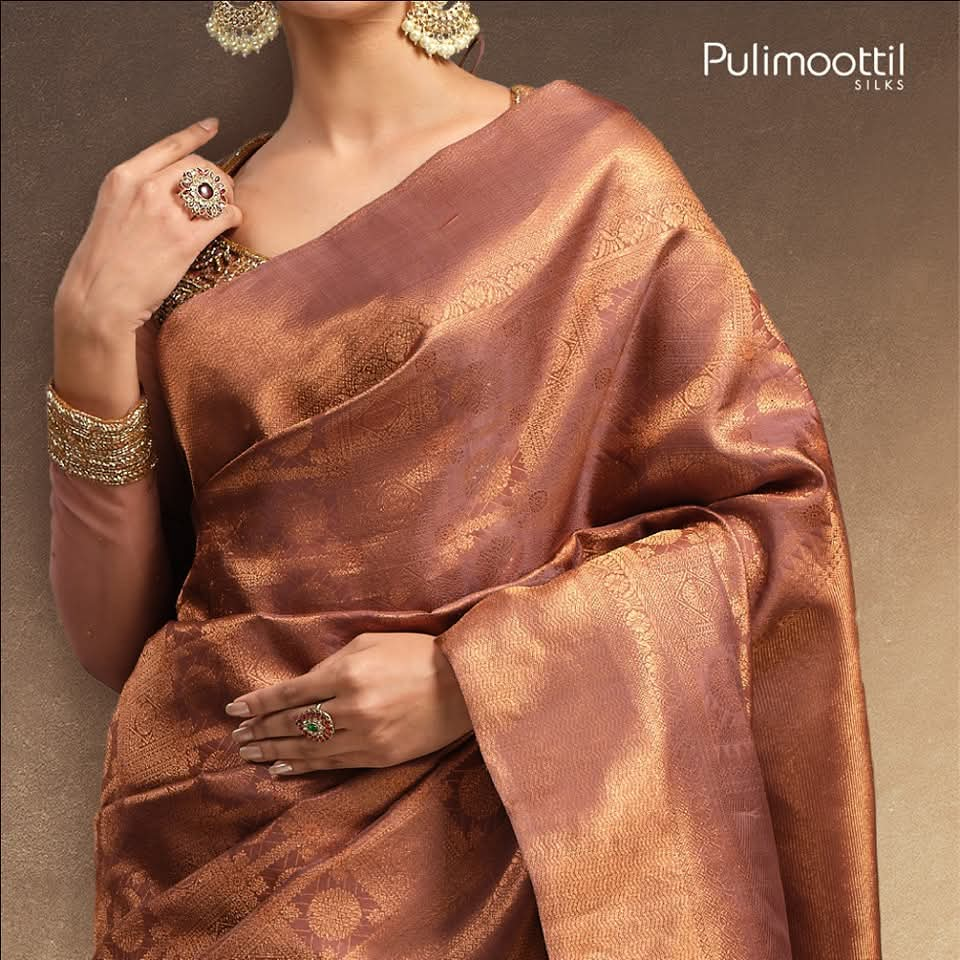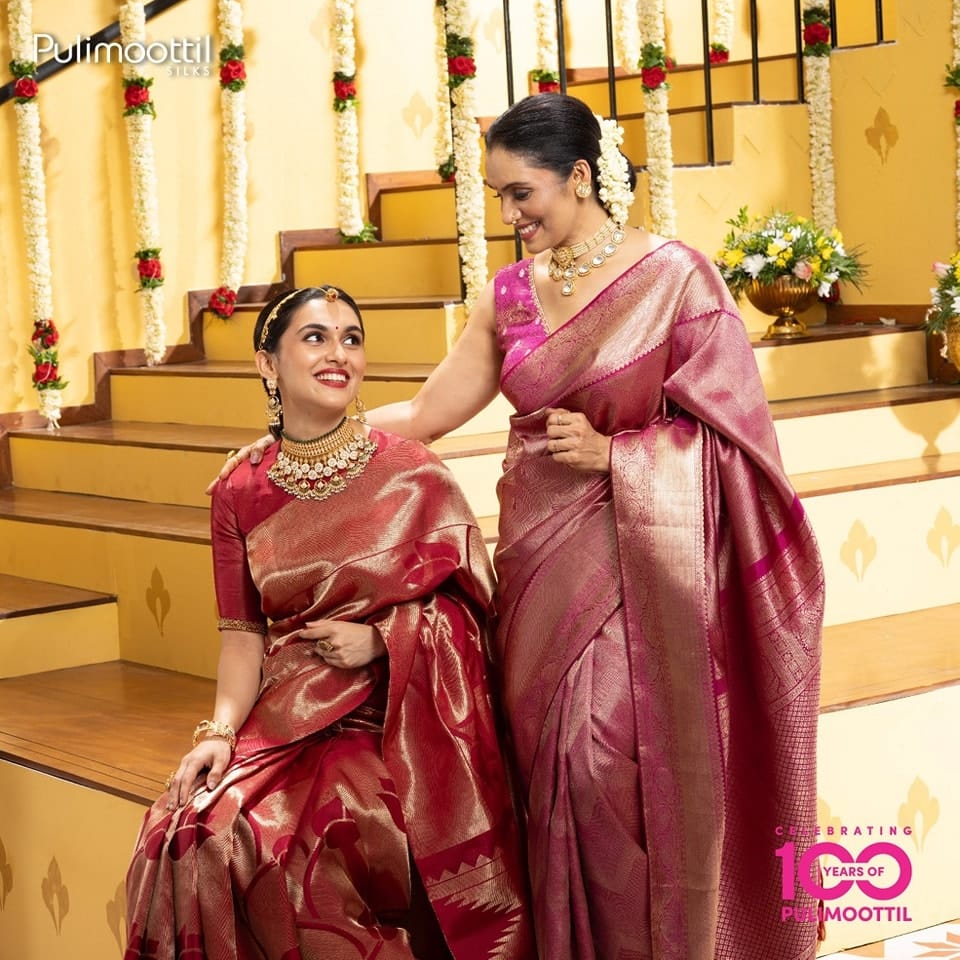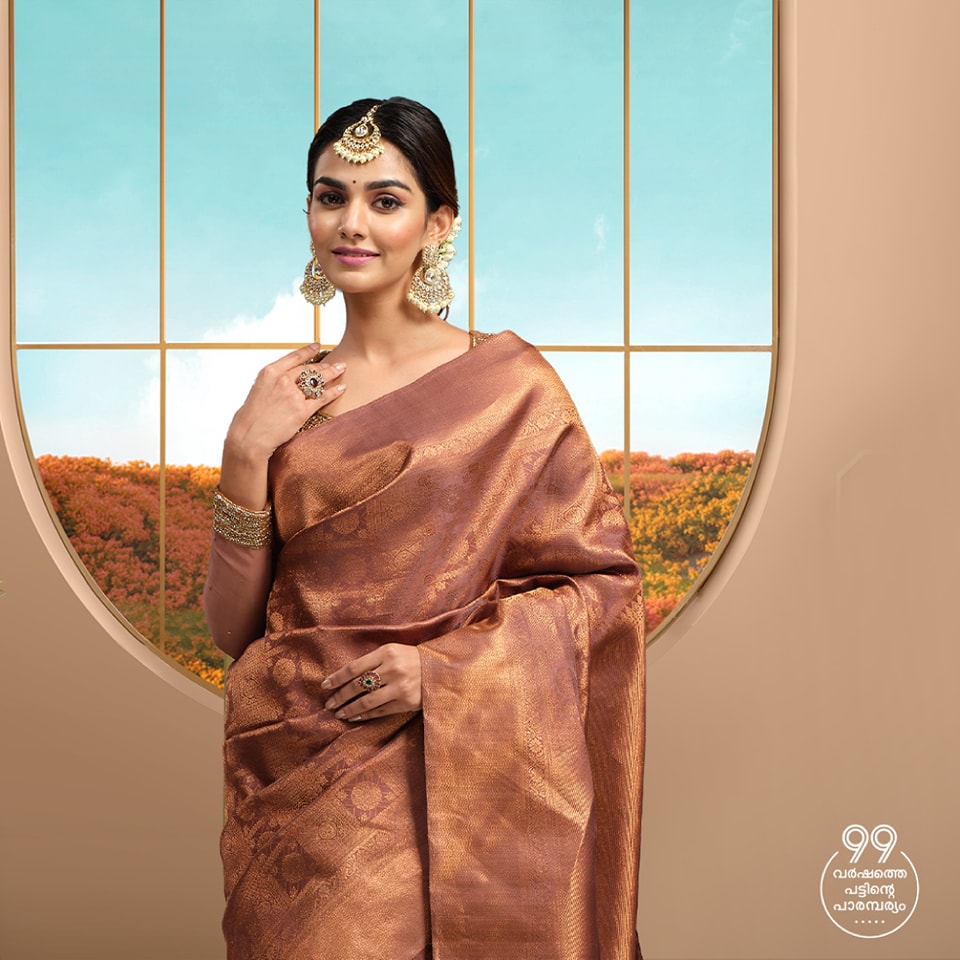
Sarees Through the Ages: A Journey from Tradition to Modern Trends
The saree, a symbol of grace and cultural heritage, has been an integral part of Indian tradition for centuries. From its roots in ancient civilizations to its modern interpretations on international fashion runways, the saree has continuously evolved while preserving its timeless charm.
In this blog, we take a fascinating journey through the history of sarees, exploring their transformation from traditional weaves to contemporary fashion trends.

1. Ancient Origins: The Birth of the Saree
The history of the saree dates back over 5,000 years, with references in ancient scriptures like the Rig Veda. The word ‘sattika’ (from which ‘saree’ is derived) was used in Buddhist and Jain texts, describing the draped attire worn by women in early civilizations.
Indus Valley Civilization (2800–1800 BCE): Archaeological findings suggest that women wore draped garments similar to sarees, made from cotton and simple woven fabrics.
Vedic Period (1500–500 BCE): Women’s attire consisted of a single unstitched cloth, often pleated and draped elegantly over the body.
Gupta Empire (320–550 CE): Sarees became more decorative, with borders and intricate designs woven using handlooms. The use of gold and silk embroidery flourished during this period.
These early forms of sarees laid the foundation for the countless regional styles that would emerge in the centuries to come.

2. Regional Diversity: The Weaves of India
Over time, different regions of India developed their own distinct saree styles, weaving techniques, and draping patterns. Each saree tells the story of its land, culture, and craftsmanship.
North India
Banarasi Silk (Uttar Pradesh): Famous for its rich zari work and Mughal-inspired floral motifs, Banarasi sarees remain a staple for weddings and festive occasions.

Chikankari Sarees (Lucknow): These lightweight sarees feature intricate hand embroidery, making them perfect for summer wear.
South India
Kanjivaram Silk (Tamil Nadu): Renowned for its thick silk fabric and temple designs, Kanjivaram sarees are a symbol of elegance and grandeur.
Mysore Silk (Karnataka): Soft, smooth, and lightweight, Mysore silk sarees have a minimal yet regal appeal.
East India
Baluchari Sarees (West Bengal): Known for their mythological motifs woven in silk, these sarees narrate epic stories through their designs.
Tant Sarees (West Bengal): Lightweight and breathable, these cotton sarees are perfect for daily wear.
West India
Bandhani Sarees (Rajasthan & Gujarat): Featuring tie-dye patterns in bright colors, Bandhani sarees are a festive favorite.
Paithani Sarees (Maharashtra): With their signature peacock motifs and rich zari work, Paithani sarees are prized possessions.
This regional diversity showcases the depth of artistry in Indian saree weaving, making each type unique and treasured.

3. The Colonial Influence: Changing Saree Styles
During the British colonial era (1757–1947), Western influences began to impact traditional Indian clothing. However, the saree remained a strong cultural symbol.
Introduction of Blouses & Petticoats: The Victorian era brought about a shift in how sarees were draped. Influential women like Jnanadanandini Devi (Rabindranath Tagore’s sister-in-law) popularized wearing blouses and structured drapes, making the saree more formal and acceptable in colonial society.
Influence of British Fabrics: Imported fabrics like chiffon and georgette started being used for sarees, leading to the emergence of lightweight, flowy sarees preferred by elite women.
Freedom Movement & Saree as a Statement: Women leaders like Sarojini Naidu and Kasturba Gandhi wore handwoven khadi sarees as a mark of resistance against British rule, making the saree a symbol of India’s independence movement.
The saree’s adaptability ensured that it remained relevant even in changing times.
4. Bollywood & Saree Fashion: The Glamorous Evolution
Indian cinema has played a significant role in shaping modern saree trends. From the black-and-white era to today’s Bollywood blockbusters, sarees have been a defining part of cinematic fashion.
1950s–1960s: Actresses like Madhubala and Meena Kumari wore heavy Banarasi and silk sarees, reflecting traditional elegance.
1970s–1980s: Rekha’s shimmering Kanjivaram sarees and Sridevi’s sensuous chiffon sarees in films like Chandni set new trends.
1990s–2000s: The ‘designer saree’ era began with Bollywood divas like Madhuri Dixit and Aishwarya Rai sporting heavily embellished georgette and net sarees.
2010s–Present: Actresses like Deepika Padukone and Vidya Balan have revived handloom sarees, making them fashionable again among younger generations.
Bollywood has consistently reinforced the saree’s charm, influencing global fashion trends.

5. Modern Sarees: The Contemporary Twist
While traditional sarees continue to be loved, modern fashion designers have redefined sarees for today’s women. Some of the latest trends include:
Pre-Stitched Sarees: These ready-to-wear sarees eliminate the hassle of draping, making them perfect for busy professionals.
Pant-Style Sarees: A fusion of saree and trousers, this innovative style combines tradition with contemporary comfort.
Ruffle & Layered Sarees: Adding drama to the classic silhouette, these sarees feature voluminous layers and playful ruffles.
Saree with Belts: A trendy way to accessorize, waist belts add structure and a modern touch to sarees.
These contemporary saree styles appeal to the new generation while keeping the essence of tradition alive.
6. Global Recognition: Sarees on the World Stage
In recent years, the saree has gained recognition on international platforms, making its way onto global runways and red carpets.
International Celebrities: Hollywood actresses like Oprah Winfrey, Naomi Campbell, and Gigi Hadid have been seen in designer sarees at prestigious events.
Sarees at Fashion Weeks: Indian designers like Sabyasachi and Manish Malhotra have showcased sarees at Paris, Milan, and New York Fashion Weeks.
Bridal & Fusion Sarees: Western brides are now incorporating sarees into their wedding trousseau, blending Indian aesthetics with modern bridal fashion.
The global appeal of sarees proves that this traditional attire has a universal charm that transcends borders.

Conclusion: A Tradition That Evolves with Time
The saree is not just an outfit; it is a legacy that carries stories of history, craftsmanship, and personal identity. From ancient drapes to contemporary designs, the saree has evolved while maintaining its cultural significance.
Whether worn by a grandmother in a traditional silk saree, a young professional in a linen saree, or a Bollywood actress in a designer drape, the saree continues to be a symbol of elegance and timeless beauty.
As fashion trends change, the saree remains constant—adapting, innovating, and thriving through every era. It is truly an outfit that connects the past, present, and future.


